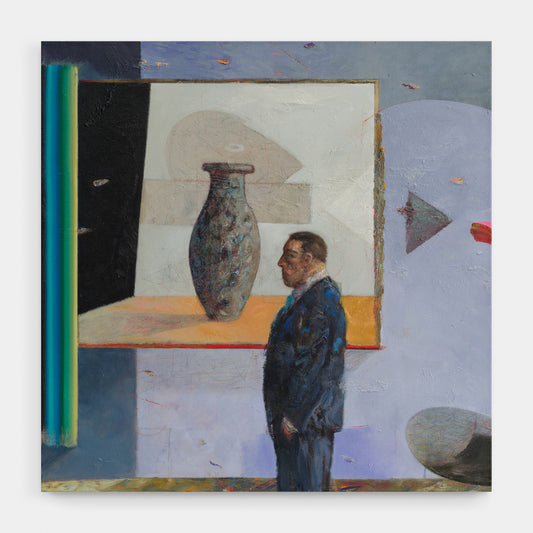'Room With a View' - Group Exhibition
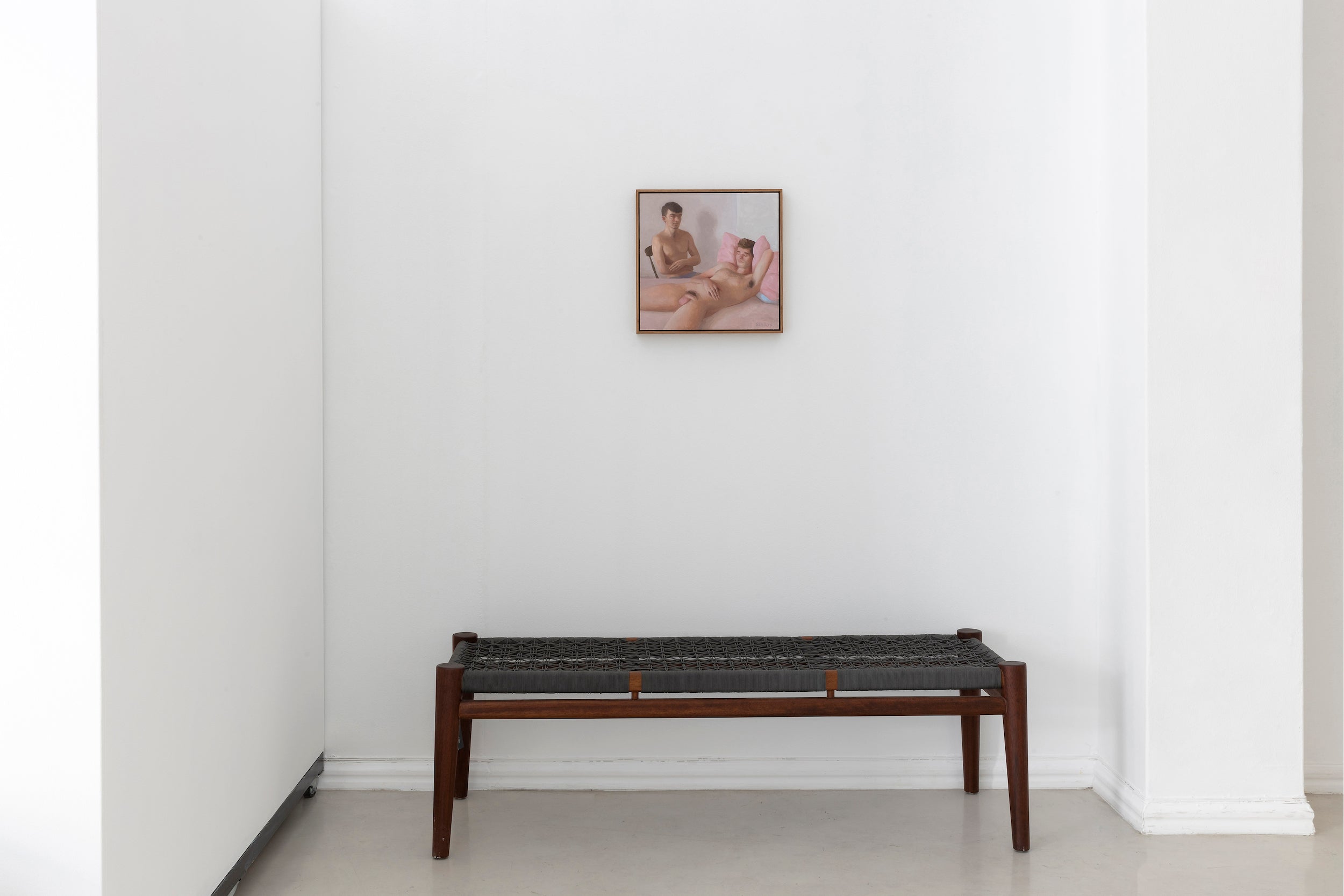
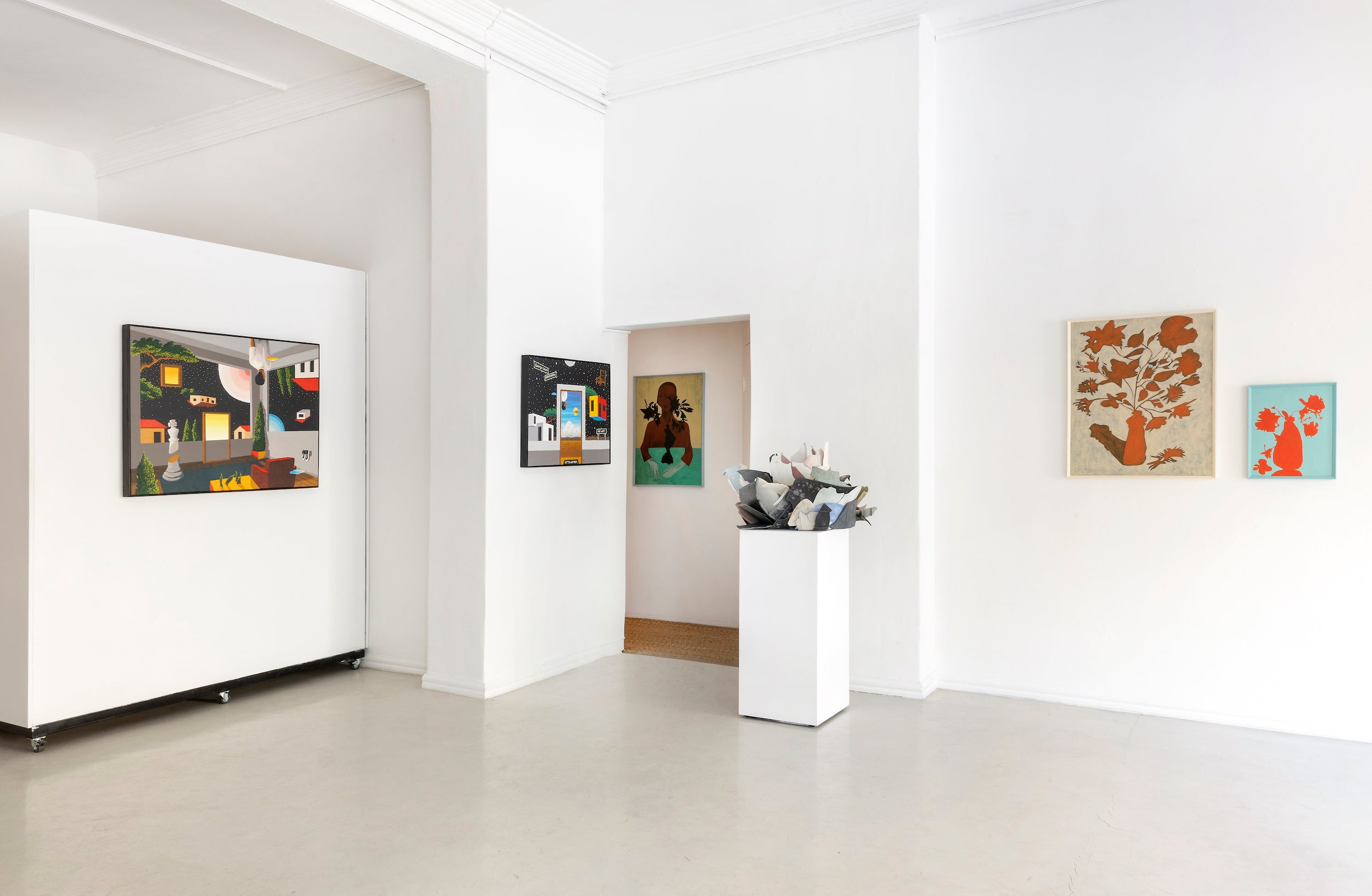
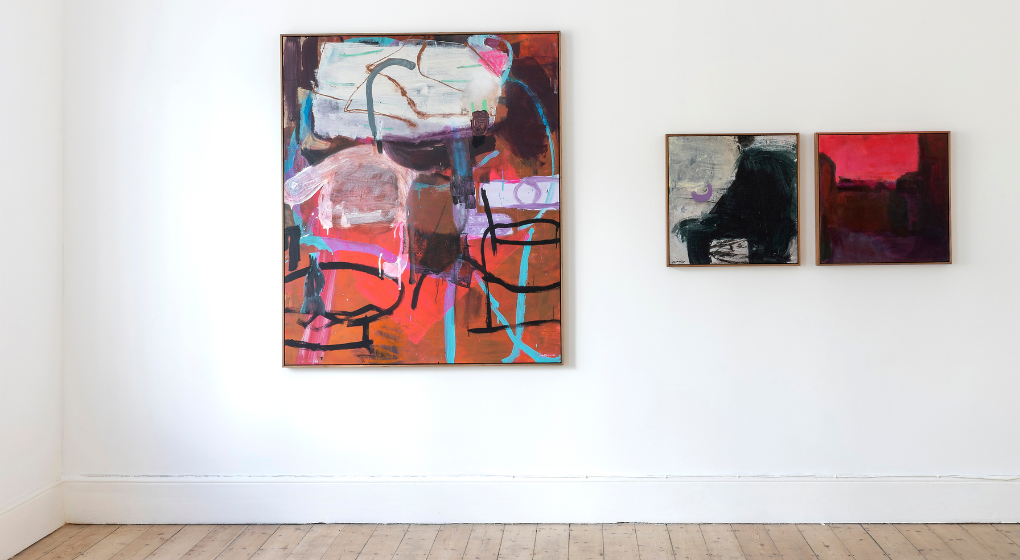
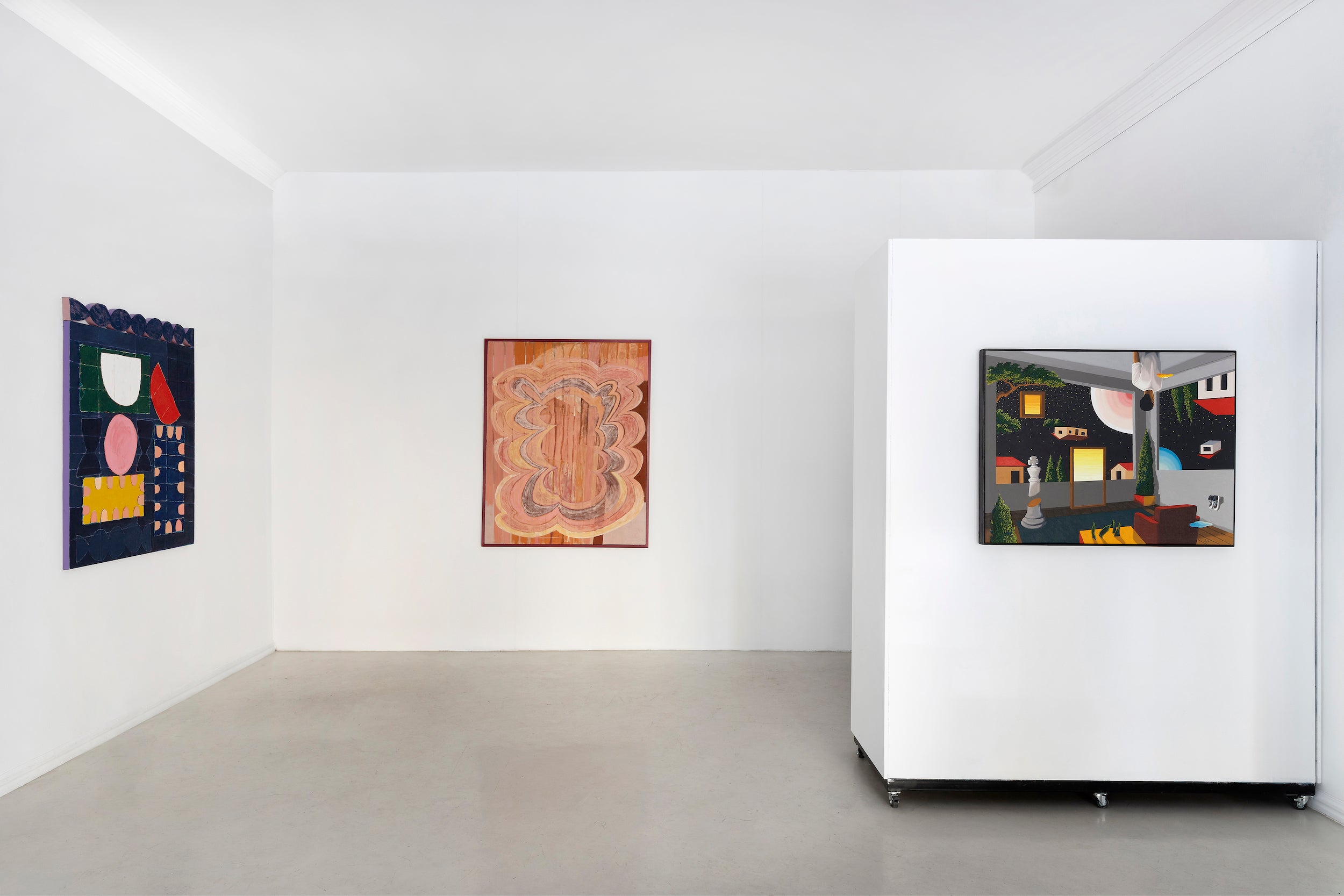
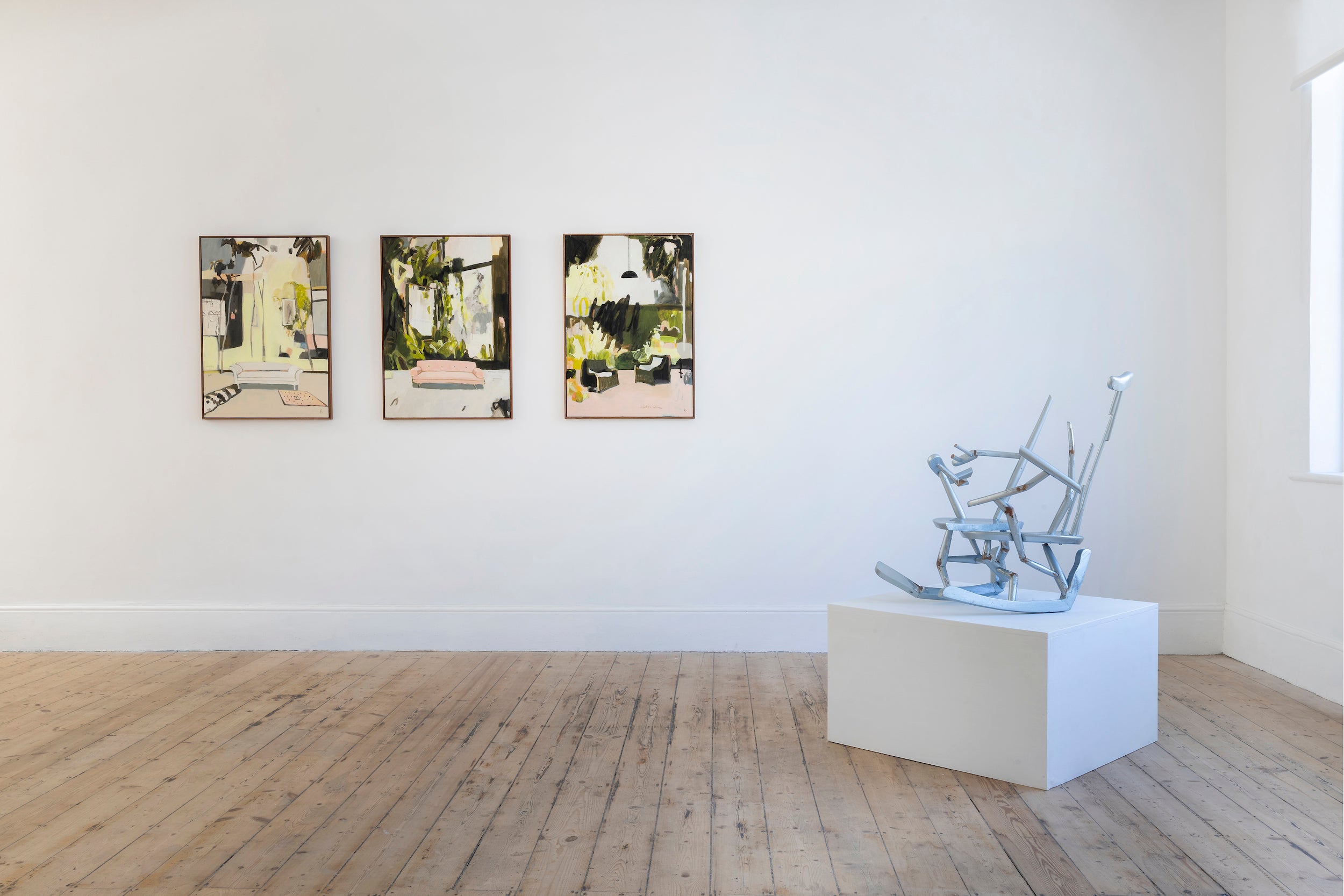
Collection: 'Room With a View' - Group Exhibition
‘Room With A View’
Curated by Karen Elkington
This exhibition brings together a group of artists who focus on rooms and furniture as subject matter both to explore concerns, mind states and ideas and to expose the underlying implications of the interior itself.
A room is much more than a physical structure - it is irrevocably connected to our sense of self and being. Mary Visser abstracts elements of real-world interiors to create new, imagined spaces which ring true to our internal worlds. In contrast, a figurative interior often emerges unintentionally from Richard Templeton Smith’s many-layered and responsive process; a newly forged space that has the inexplicable power to connect the external to the internal. On a similar quest, Hugh Bryne’s exciting pieces seek to find internal ‘placeness’ beyond place, escaping the confines of the figurative space.
Raymond Fuyana’s playful juxtaposition of universal and individual space lightly draws our attention to the paradox of our existence; we are at once the center of our universe and yet ultimately insignificant. Anico Mosert’s magnetic paintings similarly lead us to consider our relation to place. In one painting her quirky characters dominate the ‘room’ suggesting our existence is central, but in another we have a sense that we are merely viewing the world from a window and have little consequence.
The room is a place of intimacy and privacy but also a place where things are hidden away. Oliver Scarlin deliberately opens the door on intimacy, thus giving his seemingly delicate pastel room a powerful social political element intermingled with the personal.
The lives we lead within our interior spaces have obvious environmental implications. Karen Elkington merges rooms with landscapes to comment on the impact of our high consumption lifestyles, the couch becoming a symbol of our collective apathy. Thirza Schaap and Amy Rusch similarly interweave environmental concerns with elements of the room, laying bare our heavy tread on this earth.
The home interior has long been associated with women and the connection is still worth examining with the current reactionary thinking that seems to be resurfacing. Lynette Bester’s reconstructed rocking chair considers the social pressure on women to be the archetypal carer. The distortion of the sculpture speaks of the struggle and ultimately the strength it takes to find a balance between self and role.
It has been suggested that interiors as a genre are currently appealing to viewers and buyers in troubled times as they are mentally unchallenging and offer reassuring comfort in their ordinariness and familiarity. Whether or not you think art should have meaning and relevancy is an age-old debate and it comes down to personal choice but this exhibition shows that rooms in art are not necessarily ‘vacant’.
Text by: Karen Elkington
Curated by Karen Elkington
This exhibition brings together a group of artists who focus on rooms and furniture as subject matter both to explore concerns, mind states and ideas and to expose the underlying implications of the interior itself.
A room is much more than a physical structure - it is irrevocably connected to our sense of self and being. Mary Visser abstracts elements of real-world interiors to create new, imagined spaces which ring true to our internal worlds. In contrast, a figurative interior often emerges unintentionally from Richard Templeton Smith’s many-layered and responsive process; a newly forged space that has the inexplicable power to connect the external to the internal. On a similar quest, Hugh Bryne’s exciting pieces seek to find internal ‘placeness’ beyond place, escaping the confines of the figurative space.
Raymond Fuyana’s playful juxtaposition of universal and individual space lightly draws our attention to the paradox of our existence; we are at once the center of our universe and yet ultimately insignificant. Anico Mosert’s magnetic paintings similarly lead us to consider our relation to place. In one painting her quirky characters dominate the ‘room’ suggesting our existence is central, but in another we have a sense that we are merely viewing the world from a window and have little consequence.
The room is a place of intimacy and privacy but also a place where things are hidden away. Oliver Scarlin deliberately opens the door on intimacy, thus giving his seemingly delicate pastel room a powerful social political element intermingled with the personal.
The lives we lead within our interior spaces have obvious environmental implications. Karen Elkington merges rooms with landscapes to comment on the impact of our high consumption lifestyles, the couch becoming a symbol of our collective apathy. Thirza Schaap and Amy Rusch similarly interweave environmental concerns with elements of the room, laying bare our heavy tread on this earth.
The home interior has long been associated with women and the connection is still worth examining with the current reactionary thinking that seems to be resurfacing. Lynette Bester’s reconstructed rocking chair considers the social pressure on women to be the archetypal carer. The distortion of the sculpture speaks of the struggle and ultimately the strength it takes to find a balance between self and role.
It has been suggested that interiors as a genre are currently appealing to viewers and buyers in troubled times as they are mentally unchallenging and offer reassuring comfort in their ordinariness and familiarity. Whether or not you think art should have meaning and relevancy is an age-old debate and it comes down to personal choice but this exhibition shows that rooms in art are not necessarily ‘vacant’.
Text by: Karen Elkington
Works on exhibition
-
First and Last Time
Vendor:Hugh Byrne (1983- )Regular price R 92,000.00Regular priceUnit price / per -
Hard Bargain
Vendor:Hugh Byrne (1983- )Regular price R 92,000.00Regular priceUnit price / per -
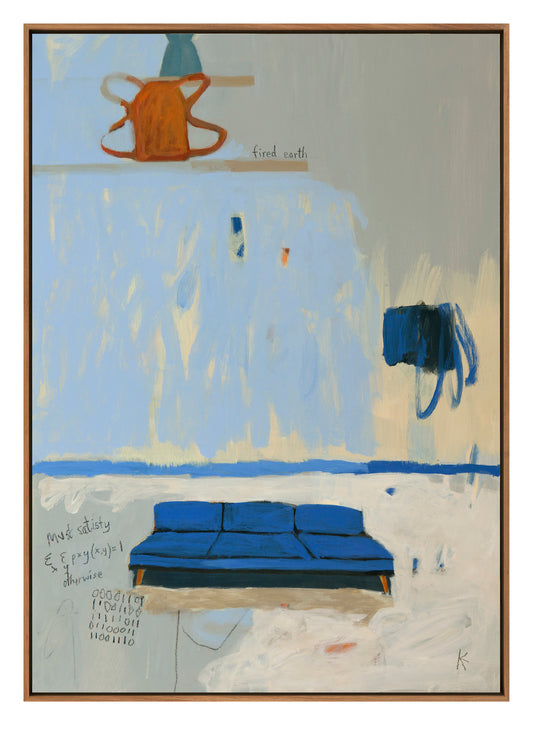 Sold
SoldFired Earth
Vendor:Karen Elkington (1963- )Regular price R 21,275.00Regular priceUnit price / per -
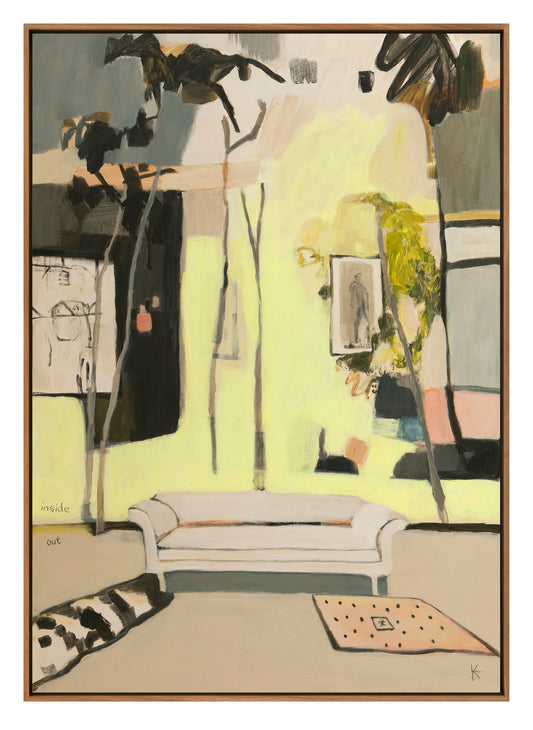 Sold
SoldInside Out
Vendor:Karen Elkington (1963- )Regular price R 21,275.00Regular priceUnit price / per -
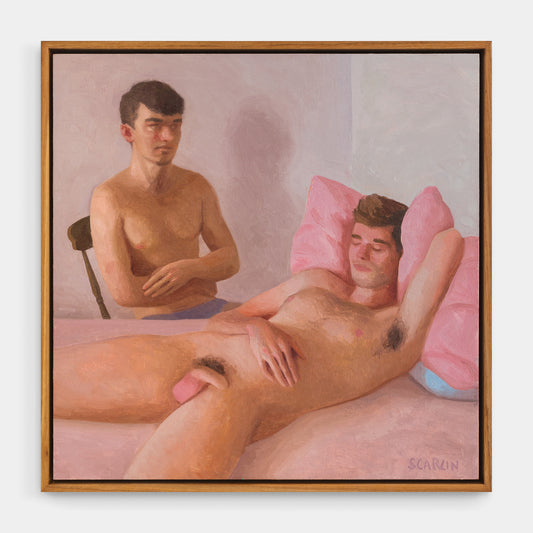 Sold
SoldAfter Yannis
Vendor:Oliver Scarlin (1987- )Regular price R 26,000.00Regular priceUnit price / per -
Not the Perfect Daughter
Vendor:Lynette Bester (1978- )Regular price R 26,000.00Regular priceUnit price / per -
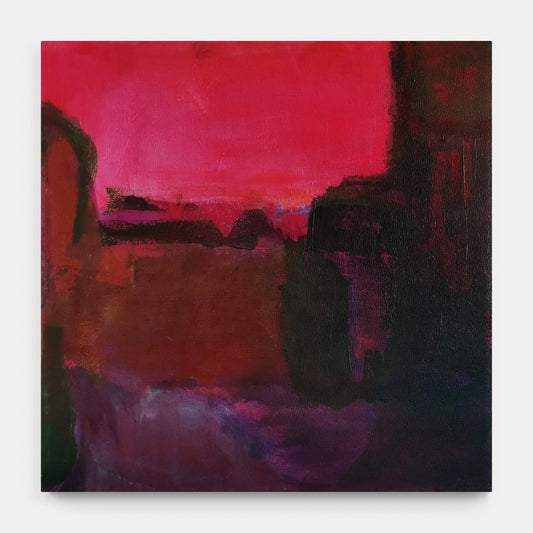 Sold
SoldSpacemaker
Vendor:Mary Visser (1971- )Regular price R 17,000.00Regular priceUnit price / per -
Late Hour Rearrangements
Vendor:Mary Visser (1971- )Regular price R 58,000.00Regular priceUnit price / per -
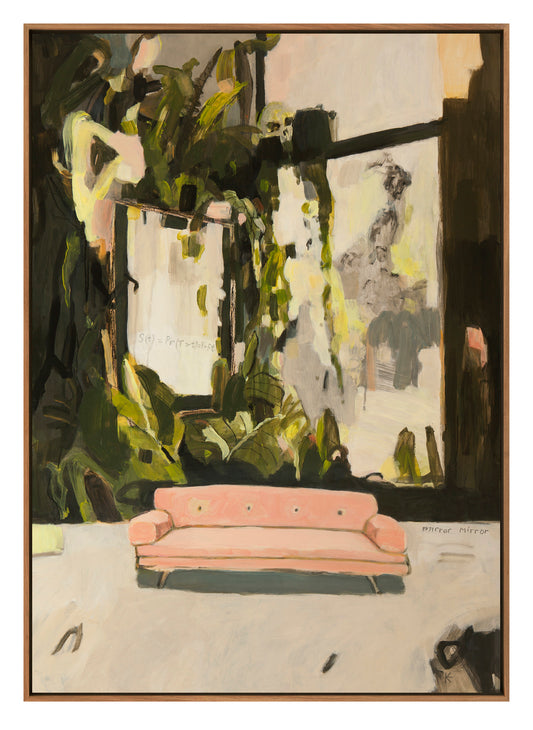 Sold
SoldMirror Mirror
Vendor:Karen Elkington (1963- )Regular price R 21,275.00Regular priceUnit price / per -
Shampoo Bottle and Roses
Vendor:Thirza Schaap (1971- )Regular price R 24,000.00Regular priceUnit price / per -
Fourteen Flowers in Soap Bottle
Vendor:Thirza Schaap (1971- )Regular price R 40,000.00Regular priceUnit price / per -
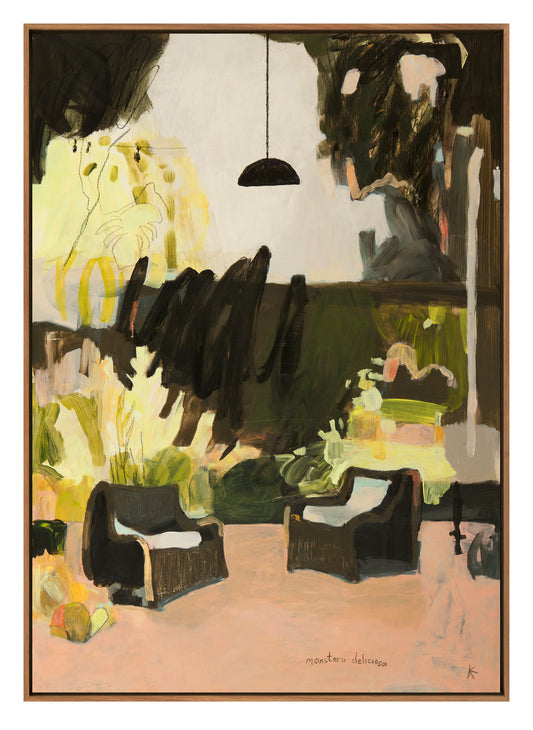 Sold
SoldMonstera Deliciosa
Vendor:Karen Elkington (1963- )Regular price R 21,275.00Regular priceUnit price / per -
Woman with Flowers in Water Bottle
Vendor:Thirza Schaap (1971- )Regular price R 40,000.00Regular priceUnit price / per -
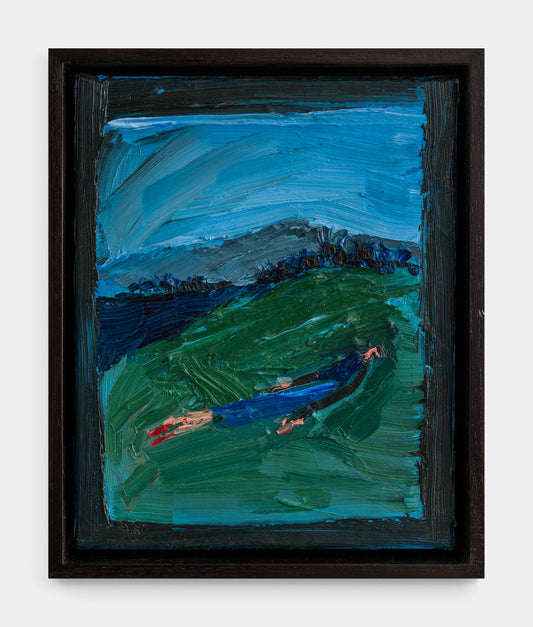 Sold
SoldAfternoon Sleep
Vendor:Anico Mostert (1995- )Regular price R 20,700.00Regular priceUnit price / per -
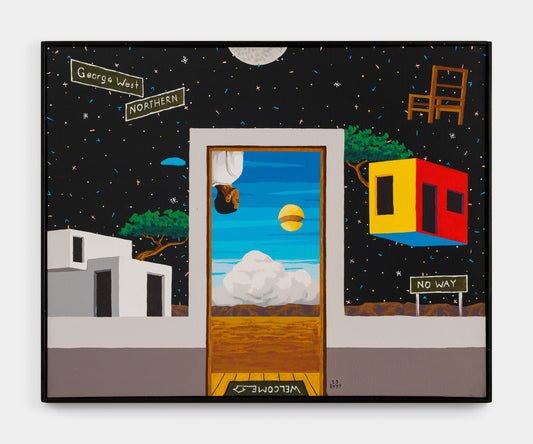 Sold
SoldThe Man Up
Vendor:Raymond Fuyana (1995- )Regular price R 30,130.00Regular priceUnit price / per -
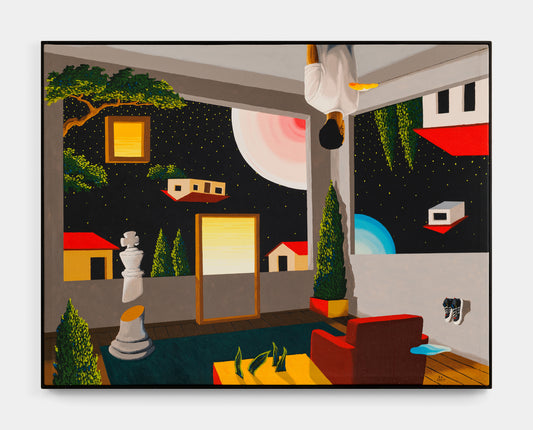 Sold
SoldDark Night
Vendor:Raymond Fuyana (1995- )Regular price R 35,880.00Regular priceUnit price / per -
Underlines, overtones and layers held between
Vendor:Amy Rusch (1990- )Regular price R 92,000.00Regular priceUnit price / per
1
/
of
24
More exhibitions
-
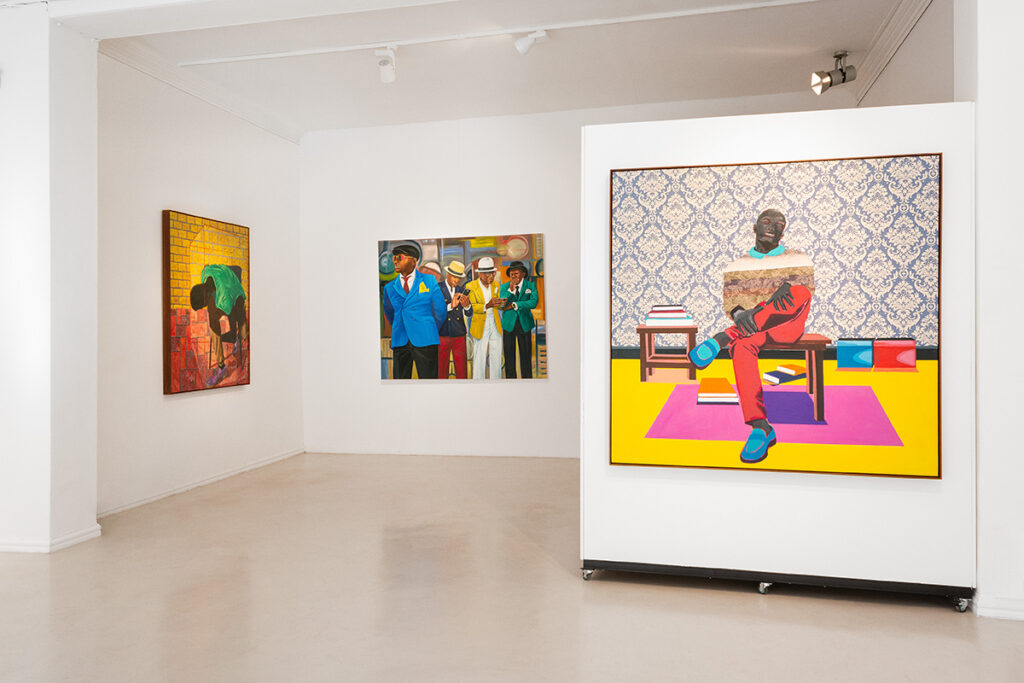
'8x8' - Group Exhibition
EBONY/CURATED Cape Town Friday 28th September 2021 Continues until 23rd October 2021
-
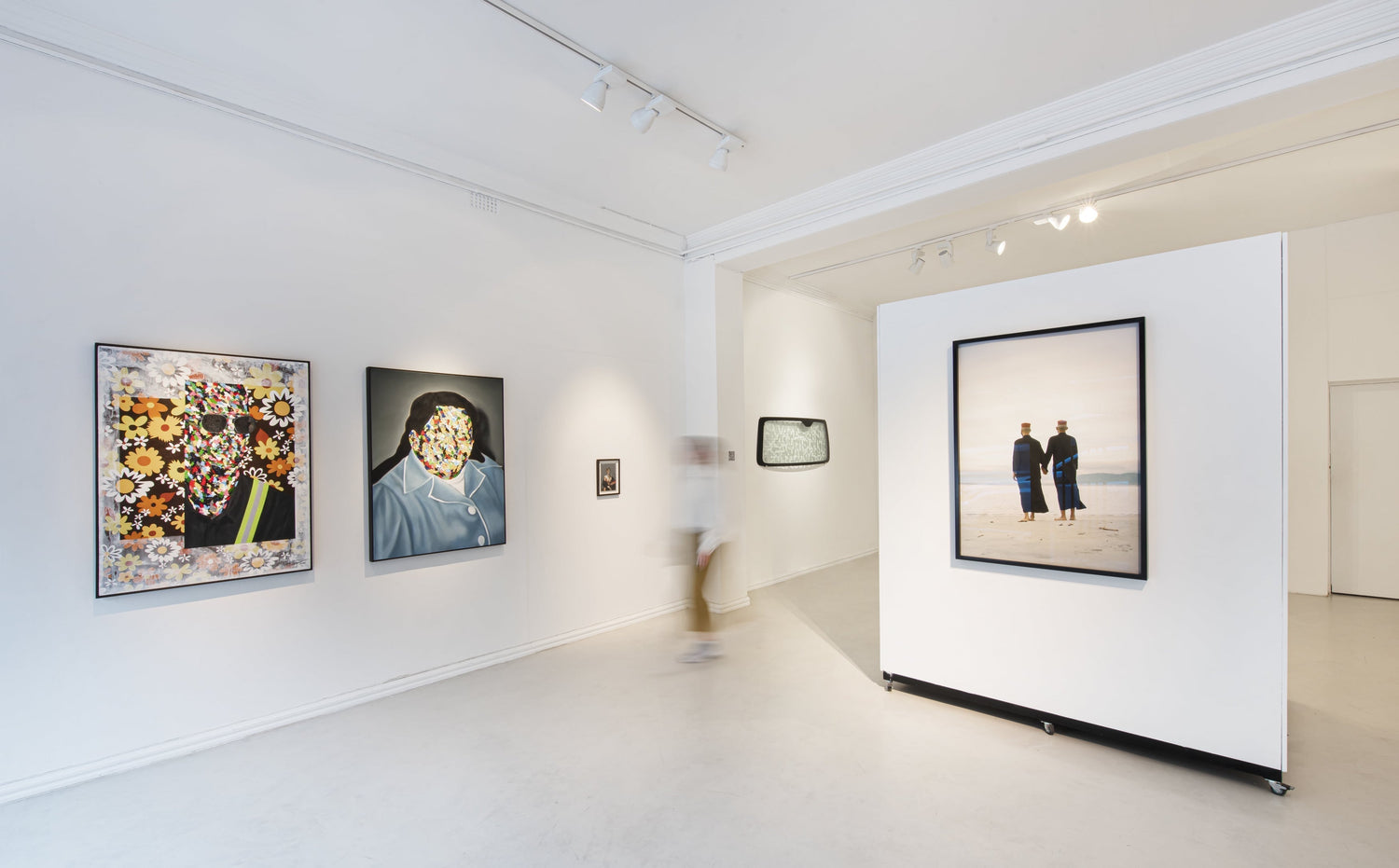
A Point of Departure
EBONY/CURATED Cape Town Thursday 5 May 2022 Continues until 26th June 2022...
-
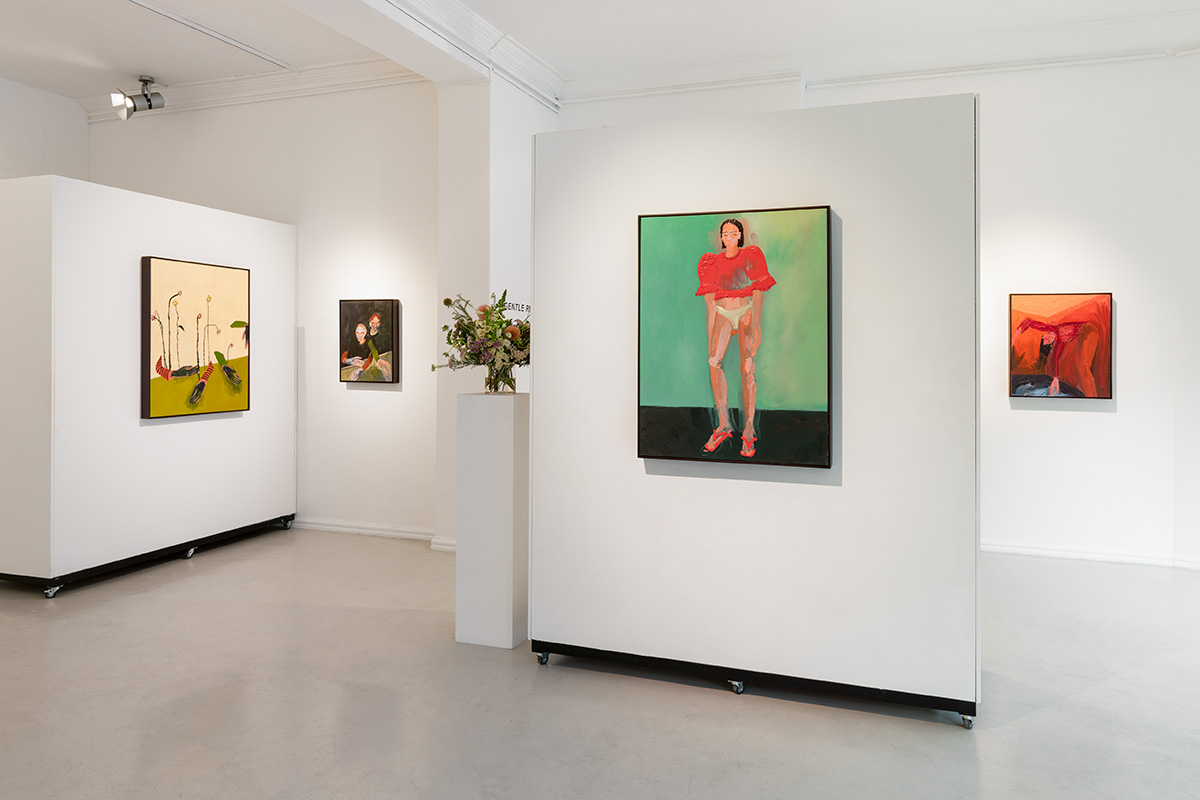
‘A Gentle Reminder' - Anico Mostert
EBONY/CURATED Cape Town Wednesday 27th October 2021 Continues until 11th December 2021 The...




